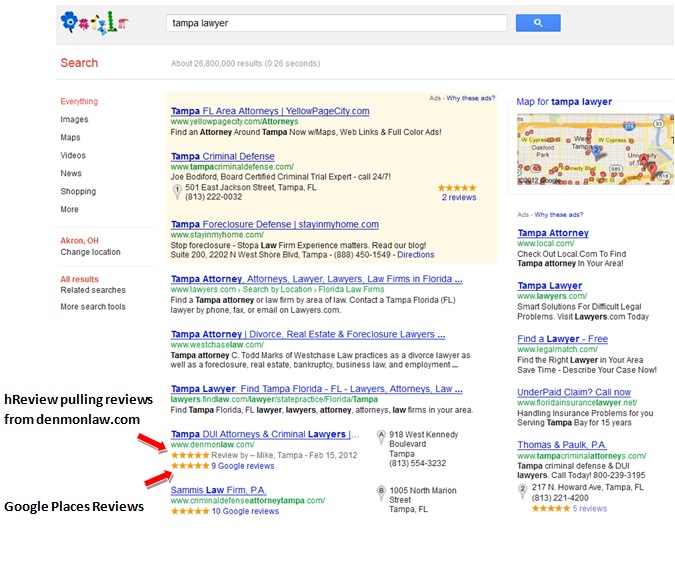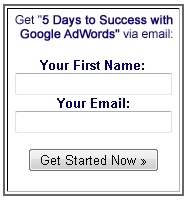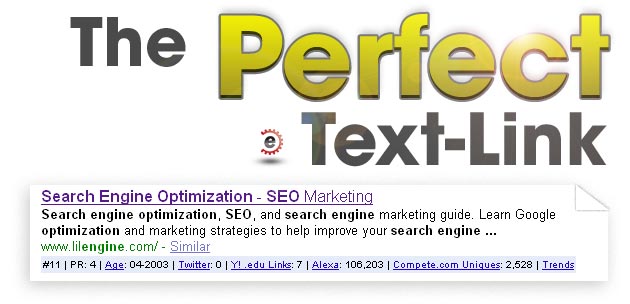Think of it like this: You’re trying to track a long-distance runner during a race, but you stop clocking him before he finishes.
 So…what was his final time and finish position? Before you high five all of your colleagues and look back with pride on the fact that you had a runner, realize that with true conversion optimization, you should not only know what the finish order was, you should even be capable of measuring whether your runner slowed down for water along the way.
So…what was his final time and finish position? Before you high five all of your colleagues and look back with pride on the fact that you had a runner, realize that with true conversion optimization, you should not only know what the finish order was, you should even be capable of measuring whether your runner slowed down for water along the way.
While this may seem obvious, in nearly every conversion optimization instance we’ve examined, site owners or managers had either no idea what to measure or were trying to assess only half of what was truly measurable.
Before you begin, make sure you are prepared. When it comes to leads, there can be many, many steps along the sales cycle before you have cash in your hand.

Nowadays, many people are using Pinterest to as a tool for promoting their ecommerce businesses. What makes Pinterest ideal for ecommerce is that it is a social media platform which is primarily visual. Since many people use photos to market their products, Pinterest offers a place where they can pin, link and share their photos. Using different pin boards, one can easily highlight different items. In addition, you can also post photos of future sales and products.
The following are some guidelines for using Pinterest for ecommerce.
1. Appear professional
Make sure your Pinterest account looks as professional as possible. Customize your profile page, arrange your pin boards appropriately and use unique and catchy board covers. Do your best to make your account stand out from others in your niche.
2. Include Pinterest widgets in your product pages
Having Pinterest widgets in your product pages will enable people to easily share your products. Whenever an image is repinned, it will still have a link to your product page, as well as your Pinterest profile. This will result in an increase of traffic to your ecommerce site.
 Blogging has become second nature to many people, and they are reaping the rewards. Business owners in any industry should learn how they could benefit from blogging. I have been blogging for the past 5+ years. You can check out all my ramblings about PPC here.
Blogging has become second nature to many people, and they are reaping the rewards. Business owners in any industry should learn how they could benefit from blogging. I have been blogging for the past 5+ years. You can check out all my ramblings about PPC here.
How businesses can benefit from blogging is by reaching and remaining on the first page of search engines. For instance; a garden/landscaping business has started a website with their products and services but have very little web traffic. It is not because they do not have good products or services, it is because they are not appearing on the first or second page when potential customers are searching for products they carry. The best step management can take at this point is to begin posting regularly (or hire someone to do it) with information about the gardening and landscaping industry.
Blogging is not meant to be blatant sales pitches; it is meant for informative, valuable content for the consumer. If each post is simply a picture of a product with a “the best there is” tag on it, website traffic will drop instead of rise. When the consumer sees something of value to them that they do not have to pay for (information in this case) they will tell their peers and share it on social networking sites.
Businesses can benefit from blogging by giving consumers free advice and ideas on how to use their products. In the gardening industry there are millions of products available so content should not have to be repeated. A top business blogger can easily pick one item per day to write about. In staying with the gardening theme the items and tips should be related to the season. This type of approach will keep consumers returning to the site on a regular basis to learn something new. As time goes on, the blog subscriber may become a regular customer as well.
 If you work in the field of SEO, you probably understand that Google controls everything. We constantly bend to its will and try to outthink it at every turn. Just as space travel is unpredictable because we haven’t yet experienced much of it, SEO is also a largely new frontier and we seldom know what to expect from our environment. Our environment, of course, is Google. But what if Google didn’t exist? Where would we look for sites? How would we get links? Your brain is probably boiling over with great ideas right now, and that’s the point of this whole thing—if we eliminate Google from the equation entirely, those paths that we come up with are almost completely organic.
If you work in the field of SEO, you probably understand that Google controls everything. We constantly bend to its will and try to outthink it at every turn. Just as space travel is unpredictable because we haven’t yet experienced much of it, SEO is also a largely new frontier and we seldom know what to expect from our environment. Our environment, of course, is Google. But what if Google didn’t exist? Where would we look for sites? How would we get links? Your brain is probably boiling over with great ideas right now, and that’s the point of this whole thing—if we eliminate Google from the equation entirely, those paths that we come up with are almost completely organic.
Google is extremely popular with both the general public and with SEO professionals, but it often locks us inside of a box. At some point we’re not exploring the web on our own, and instead we are relying on an algorithm and some web spiders to explore for us. We can break out of this box and choose our own destination in a natural, organic way. Considering the question “what if Google didn’t exist?” is a great way to answer the question “where can I get more links?”
Playing “what if?” is a fun, but sometimes dangerous, game. It’s easy to get stuck down in the mire of negativity and use “what if?” to fuel your own pessimistic fire. If you use it correctly, however, “what if?” can be a great catalyst for ideas and innovation. For example, think about the popular post apocalypse genre of fiction, where a shovel might become the protagonist’s best weapon, best tool and best friend. Similarly, in a world without Google, a message board buried somewhere inside of a mediocre site with low domain authority might become an excellent research tool. After all, if all of these people are willing to brave an underwhelming site just to talk to each other and share about a topic, that means they’re passionate about it. Passion leads to great info, great leads on new sites and useful links. Google does exist, of course, but thinking outside of that box produces some interesting results.
 If your SEO rankings are plummeting, one of the most effective local internet marketing techniques to help bring it back around is to take a NAP:
If your SEO rankings are plummeting, one of the most effective local internet marketing techniques to help bring it back around is to take a NAP:
Ultimately, we’re talking about local citation building. Citation building can have a powerful effect on your SERP positioning for keywords and searches returned using local data and terms. However, it’s not as easy as simply requesting inclusion in Google Places and getting a couple of links from sites like the online Yellow Pages. The following are 4 simple steps for taking a NAP, AKA; building effective and long-lasting local citations.
 It’s easy to publish a blog post, a tweet or a status update. Sometimes too easy. As a business owner (and bloggers are business owners, too) you have a responsibility to publish facts. Readers don’t come for fiction, or to be taken on a breezy diversion of gossip and rumors. They come to your blog and follow your social media profiles to learn something from you.
It’s easy to publish a blog post, a tweet or a status update. Sometimes too easy. As a business owner (and bloggers are business owners, too) you have a responsibility to publish facts. Readers don’t come for fiction, or to be taken on a breezy diversion of gossip and rumors. They come to your blog and follow your social media profiles to learn something from you.
You can seriously damage your brand by doling out misinformation as if it’s accurate, so take your time to get it right. Be certain you’re publishing facts.
To Kill Your Credibility Fast:
1. Jump on a Non-Scoop Scoop
Ever heard of a Twitter death hoax? This all-too-common viral “scoop” works for a number of social psychological reasons, none of them useful in getting to the truth. A quick Google search reveals insight about them from highly reputable sources, including the TheNewYorkTimes.
Facebook scams work the same way. I spent no time at all cross-referencing independent sources about apps that claim to let you see who viewed your profile. I debunked them in no time here, here, and thisone even references Facebook’s own Terms of Use.
Did you hear about the false CNN and Fox News reports that the Supreme Court struck down the individual health insurance mandate? It was such bad reporting about such a big event that the mistake got almost as much attention as the real news! However, you aren’t a news organization. No one will talk about you for making a mistake. They just won’t pay attention to you anymore.
2. Reiterate Common “Knowledge” that isn’t True
Whatever your area of expertise, you probably hear about all sorts of myths that masquerade as facts. Living in the world of internet marketing, I witness countless assumptions about the Google algorithm being spun into “knowledge” all the time. This spring, as the Penguin update rolled out, SEO bloggers made up stories about what the Over Optimization Penalty means.
I don’t think they were trying to deliver false information, but they did. All they needed to do was read Google’sownblogpost on the subject. Often, the actual truth is less interesting than the general consensus about what’s true.
 It’s pretty much common knowledge: Web developers hate SEO experts. In all fairness, however, the feeling is mutual. But there are some good reasons for this culture clash.
It’s pretty much common knowledge: Web developers hate SEO experts. In all fairness, however, the feeling is mutual. But there are some good reasons for this culture clash.
“Same Thing” Sickness
One thing that SEO’s hate about web developers has to do with the way they execute or fail to carry out a very specific request.
A case in point: An SEO requests a developer to create a 301 redirect between pages. The developer does a meta-redirect or a 302 redirect citing that it’s the “same thing”.
From the developer’s perspective, it’s the same thing for the user, but from an SEO standpoint, it affects the search engine rankings.
The Death of Optimization
Developer skills and SEO techniques go hand in hand, so when if a developer fails to do their job, then it doesn’t matter what the SEO team does. Even with a copy of Google’s secret algorithm in hand, the site won’t rank if the site won’t work.
A case in point: A client implements some redesign elements. Suddenly, traffic drops by 30%.
The problem: Many of the pages don’t load like they should and the ones that do load show 500 server errors. The developer failed to spot the errors during the development process.
The result: 3 weeks of seriously diminished traffic.
The “I Know SEO” Syndrome
This is a contagious disease that developers get that can quickly spread to other developers. If you have ever heard a developer say something like I’m pretty good at SEO, it can usually be translated into I’ve read a little about SEO and therefore I pretty much know more than you do.
But wait a minute, SEO’s. You aren’t immune, either. There is a related syndrome called “I can code”.
A case in point: An SEO expert successfully builds a Word Press site and suddenly deems themselves a web developer.
The Real Problem
At the root of the culture clash between coders and SEO’s are their driving philosophies. Business classes that teach search engine optimization focus on uniqueness. After all, differentiating yourself from the competition is a good thing. On the other hand, computer science classes center on making everything the same. Each discipline takes a different approach to reaching the same result: stability and efficiency.
If it’s your first time hearing about rich snippets you may want to read up at microformats.org first. In general though, rich snippets allow webmasters to influence the display of their website’s listings in search engines.
Like this:
 Rich snippets have been around since 2009, but up until recently only a few websites could actually benefit from them. Previously, Google required webmasters to submit rich snippet request forms through its webmaster tools before anything would display differently in search results. Recently though Google has removed the manual approval process for hReview and other rich snippet code. This opens up many new exciting opportunities for both webmasters and SEO professionals.
Rich snippets have been around since 2009, but up until recently only a few websites could actually benefit from them. Previously, Google required webmasters to submit rich snippet request forms through its webmaster tools before anything would display differently in search results. Recently though Google has removed the manual approval process for hReview and other rich snippet code. This opens up many new exciting opportunities for both webmasters and SEO professionals.
hReview is arguably the most important rich snippet because it can pull reviews from your website and display them as stars under your search listings. Richard Baxter from SEO Gadget noticed a 5% CTR increase to his website after implementing hReview and obtaining stars in search results. 5% is an attractive number considering it takes all of five minutes to install the code.
To get the code for your website you can try the hReview Creator tool at microformats.org or simply use a template (I didn’t have much luck with the hReview Creator tool personally). Here is an example code template I drew up for my company, Evolve Creative Group.
<div class=”hreview”>
<span>
<span>Evolve Creative Group </span>
</span>
Reviewed by <span class=”reviewer”>Susie Smith </span> on
<span>
Jan 31<span class=”value-title” title=”2012-01-31″></span>
</span>.
<span>Thank you for being a great partner and delivering a world-class website.</span>
<span>After an extensive web agency search, we selected Evolve Creative Group and couldn’t have been happier with our choice. Todd Bertsch and his team demonstrated a passion and commitment to our project from the very first phone call.</span>
Rating:
<span class=”rating”>5.0</span>
</div>
This code can be placed anywhere within the body section of your source code. Make sure to use Google’s rich snippet testing tool to ensure that everything is set-up correctly.
Review stars will undoubtedly make your website more prominent in search results, but you need to be careful with how you use them or you risk getting your website penalized (unlikely) or having the snippet disappear altogether. Google’s guidelines for the hReview rich snippet state:
Google also has a rich snippet spam report form that states, “a rich snippet promoting a travel package as an event or displaying fabricated reviews would be considered spam.”
Google’s first guideline is the most confusing for many because it’s open to so much interpretation. My company could argue that our homepage is about a specific service (web design), but would Google see it the same way? Denmonlaw.com from the example above has simply moved a review from their testimonial page onto their homepage and incorporated hReview.
Assuming the review is legitimate I don’t see any issues with this practice. Only time will tell the future of this new open-ended system, but for now, we should all be taking advantage of this incredible opportunity while it’s still available. What do you think about moving a few testimonials to the homepage to benefit from hReview?

It seems that practically every webmaster understands (or has at least heard) that email marketing is important. The problem is, too many webmasters just stick an email newsletter signup form on their website and figure that they’ve got email marketing taken care of. Nothing could be further from the truth.
An email marketing campaign needs to be carefully planned, setup and optimized for maximum performance. There are many aspects of an email marketing campaign that need your serious attention – opt-ins, messages, deliverability, open rates, etc. This article will just cover one important aspect: email opt-in rate.
In this article, I want to cover three keys to a high opt-in rate that every email marketer should constantly work to improve. (For the purposes of this article, it does not really matter if your campaign is primarily a newsletter or autoresponder.)
The first step to maximize email opt-ins is to offer website visitors a strong value in exchange for subscribing. In most cases, just offering a newsletter is not a strong enough offer – you need something with a much higher perceived value.
One of the best offers is to give a free ebook or whitepaper to subscribers. It does not have to be extensive – oftentimes a 5-10 page ebook that is filled with solid, valuable information will work very well. Make sure that the free gift that you offer subscribers will be appealing and offer value to each segment of traffic that visits your website (or as many of the segments as possible).
An example of a free ebook offer:

(Note how the free ebook in this case is actually relatively promotional in nature. In small, product-focused niches, this strategy often works well. In other markets, you’ll usually need to offer a more educational ebook.)
The opt-in form on your website should be crafted and optimized to convert as many visitors as possible into subscribers. The form should be:
Example of a poor opt-in form:

Examples of strong opt-in forms:


Note: If you aren’t already, you should be requiring subscribers double-opt in. (We’ll just assume that you are for the rest of this article.)
It is essential that you optimize your double opt-in process, since a poorly constructed process can “leak” a substantial number of subscribers. A well-constructed double opt-in process, though, could reasonably get 70-80% of subscribers to complete the opt-in. (While losing 20 to 30% of subscribers may sound bad, realize that a substantial portion of those are probably users who mistyped their email or intentionally submitted an incorrect e-mail.)
Here are several factors you should look at to improve your confirmed opt-in rate:
Summary
Achieving a high email opt-in rate is the starting point for a successful email marketing strategy. Hopefully the tips outlined in this article help you as you continually work to increase your email opt-in rate.
 About The Author
About The Author
Adam J Thompson is Senior Partner at RYP Marketing, providing search engine marketing, conversion rate optimization, and online marketing results to clients around the globe since 2006. You can follow Adam on RYP Marketing’s Facebook page.

I find myself often on the hunt for that one great link. Many people simply do not realize the impact one text link could have on your website, its natural search ranking, and trust and authority of your website as viewed by the search engines.
Wherever I am around people — community functions, industry events, sporting events, ANYWHERE pretty much—a constant thought is “Hmm, I wonder if this person could help me get a link, or do they know someone who can help me get a link.” It is unfortunate but Matt Cutts is right: the best links are not bought or sold or gained by email spam. They are ones you network long and hard to get, and they are not easily accessible.
Pardon me for a moment to clarify: we all know that one link is not going to make your website the next Amazon.com. But what this one great link can do is make everything else you have done to your website become much more important. If you get the one great link you have been looking, for guess what happens? Every other link to your site typically becomes more valuable, every updated title tag on your website becomes that much more relevant, those hours of perfecting your internal link structure all seems to be coming together.
These great links are not easy to find, even a creative full time link builder like myself can typically only produce a few of these per month, and this includes 12 years of experience, and 12 years of relationships. The average webmaster might only find one link like this per year! Some webmasters pass up link opportunities because usually it comes with a bunch of red tape, prerequisites and potentially gift giving to obtain it, so they procrastinate and just say no way. (And if you run across one of these great links and aren’t going to jump through the hoops to get it, email me, I will take it. )
However the value can be supreme: I have personally seen one link take a website in a somewhat competitive niche to number one after being in place for a period of 120 days. I’m not saying there’s a magic bullet, but the effects of your hard link building work pay off when powerful links come into place. Also this link continues to pay dividends as it grows more important over time.
You probably now want to know what this great text link looks like, so when it comes around you will be prepared to grab it. It will be from a website that has been online since the late 80’s usually around 1986-1988. It will have a minimum of a Google Tool Bar Page Rank of 7 but typically the great ones are PR8’s +. It will be in the top 5000 in Alexa Ranking and have VERY few external links. As for backlinks, it should have so many that no one could possibly count, but if you do a link:www.thegreatsitelocation.com you will see Google showing somewhere in the 10K range and in Yahoo you will see 250K plus.
It may not be on a directly related website, as I am sure there are not many PR8 websites on the net selling baby strollers, but you can work around this when it comes to a fantastic link. These are not the only prerequisites of course, you’ll need your own intuition built from your own link building experience, and I usually have a gut feeling when I find one. What any SEO will fully agree on is a link that fits this profile is very valuable and if you are serious about your internet marketing, then you better get out your check book or your scissors (so you can cut through all the red tape that is going to be involved) and get this link.
Share this post http://bit.ly/B98o2 . Sphinn this post